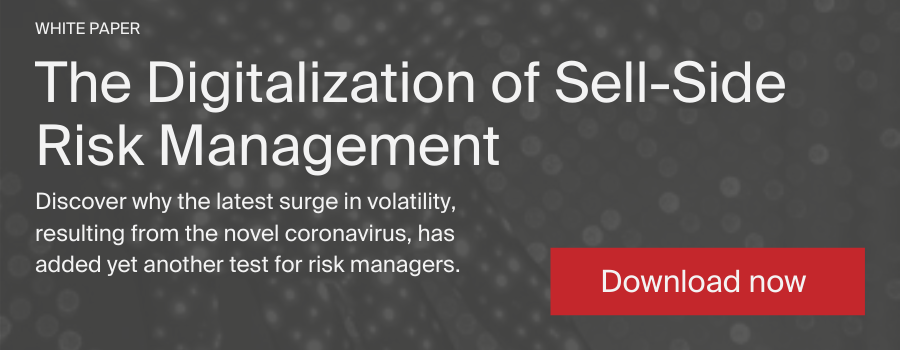This is a transcript of an a recent interview with Anthony Pereira, CEO of Percentile.
[Q] What are the major technology challenges that asset managers are facing at the moment?
They’re very similar to what has been faced by other industry sectors, in that there is a lack of cohesive technology within firms, and not enough investment in connected technology. There has been a focus on a best-of-breed approach to solving front-office trading and asset management functions, but there’s nothing connecting that to the second line of defence, so we end up with what I call operational spaghetti. There are a lot of manual workarounds, and if one thing doesn’t work properly, we see a domino effect.
The volume of regulations have increased, and the requirements have changed so much that this approach is just not suitable any more. Asset managers require data, processing and automation just to get the basic information out to the regulators consistently. Firms are finally realising that technology is the solution to this problem.
We do have a regulatory burden, but it’s a burden because we have made it one through lack of investment.
[Q] How connected are the technology and regulatory challenges?
Regulatory compliance should be a byproduct of what a business is doing anyway. Where firms have invested in processes and automation, they will be able to handle regulatory demands. Of course, more regulation means more work, but it shouldn’t be inordinate amounts more.
The fact of the matter is that, actually, most firms do not work like that, and so there is now a very clear link between the two. Regulation can, and should, be managed through technology. Technology has always been used in the front office, but sometimes this has been at the expense of the back office. Now, behind-the-scenes operations need to be improved as well, and finally that investment is seen as mandatory.
All this regulation has finally given those teams the clout to go to senior management and demand investment, because otherwise they may as well shut up shop. The regulatory issues are front and centre of board meetings now.
We are now seeing regulations that make individual people accountable. If you don’t have the right processes in place then certain people could go to jail, and that’s the kind of ramification that really focuses the mind.
The regulators themselves are also improving their process in assessing how firms are adhering to the spirit of the regulation, not just ticking boxes, and technology plays a part in that as well. Every regulatory report has to be backed up by evidence, and firms have to show how they made their decisions, where the data came from, and who has the capability to change it. That data lineage and governance has been in banking for a while already, but it’s now moving to the asset management world as well.
[Q] With so much data around, how important is it to have something in place that can manage it?
It is important, but it’s more important to manage the data in a way that’s sustainable and useful. Regulators are asking for a lot of data that is difficult to put together, and that will always be the case. When they’re asking questions, whether around capital submissions or transaction submissions, they want to know the answers are correct and accurate. When firms audit their processes, they have to show that the right change control processes and data lineage and governance processes are in place, too.
It’s not just about capturing data. Firms also have to manage it and show they’re using it correctly, with the right processes in place. That’s the difficult part of data management, and in our experience that’s what firms tend to struggle with most.
[Q] Is the problem that there is simply so much data?
There is a volume issue, but the bigger issue is around quality and understanding what the data is saying at any given point. What needs to be fixed? Who has ownership of the data? Who is in charge of maintaining that data?
We work in the world of risk, and we see central hubs with data coming in from all areas of the organisation. The risk team doesn’t necessarily own that data, but it needs to know who does. If they don’t know who owns it, or if it doesn’t have a set owner, then you know there are going to be issues with the data before you’ve even looked at it. Data ownership is a key part of data quality, and without transparency and governance you cannot have the required levels of data quality.
It’s also important to have confidence in the output of whatever you’re using the data for. You have to know that everything upstream of the final result is trustworthy, correct, and well managed.
[Q] How does the RiskMine product help with this?
RiskMine is designed to cleanse and manage all sorts of input data for risk management. It puts the data through a cleansing process, making sure that that pipeline is robust. It entirely manages the sourcing of all the inputs and outputs of risk data, whether it comes from front office systems, third-party vendors, or anywhere else.
It provides tools for visualising data quality checks, highlighting and handling exceptions, automating a lot of the work that was previously done manually. That means humans can work on the results of the analysis and on improving processes further; working on risk management rather than on data management.
That’s the groundwork. RiskMine then automates risk computation for portfolio simulations and stress testing, both for the day-to-day risk management as well as for regulatory capital and regulatory risk reporting. If we use the same system for both requirements, then you only have to deal with one set of model validations, one set of reconciliations, and you’re not duplicating efforts or data. That improves the entire risk landscape tremendously.
[Q] Since Percentile launched three years ago, what changes have you seen in the fintech space? Was regtech an inevitability?
We saw much of fintech come about almost as a result of the financial crisis; trust in the financial system had diminished to such an extent that people were looking for a completely different approach to the whole problem. Payments solutions and cryptocurrencies focused on disintermediating traditional financial institutions as much as possible, but that fintech ecosystem leaned towards the retail side of banking.
In the last couple of years, the focus has moved more towards the regulatory side of things, particularly in capital markets, where regulations like the second Markets in Financial Instruments Directive have focused clients’ minds of getting things done ahead of looming deadlines. Legacy vendors have been around for decades and are used to charging seven-figure sums for any regulatory project. That is just not going to be viable anymore.
There’s an acceptance now that new firms, using new technologies and delivering services in a different way, is the right way to go. The mindset of the industry has changed for the better, and there’s a lot more understanding that, in order to solve some of these problems, you have to collaborate, communicate, break down barriers and use the technology available. We see the largest institutions working with smaller firms in order to get things in place much more quickly, and a lot of those firms fall under the RegTech banner.
RegTech providers tend to understand what the large institutions are going through, what their pain-points are, and how they can solve those problems. There’s a lot of legacy in these big firms; some good, some bad. They can’t just change the way they do things overnight. You can’t just tout pipe-dream technology, you have to address the challenges that exist today.





